Positive reinforcement is one of the common techniques to train pets. It has been recognized as a successful and humane way to modify behaviour, remove bad habits, and maintain the desired action among pets. It includes verbal cues, clickers, sounds, toys, affection, games, treats, hand signals, etc. It can be very beneficial in house training or learning tricks. Here are 10 helpful things that you should know for an effective positive reinforcement:
1. Use praise and food
Dogs and cats are very food-motivated pets, so rewarding them with treats for every desired action will make them repeat positive behaviour. When using treats as rewards, make sure to feed them a small amount to entice them and they go looking for more. It’s better if the kibble is soft and easy to chew so there’s less distraction when the food falls off the floor. Remember to give acknowledgement before handing the food so that they associate the good behaviour with praise and praise with food. By doing so, they do not depend on food alone when they look for rewards. Later on, you will have to gradually increase their rewards, which will be tackled later on this blog.

2. Clicker Training
Clicker training is a separate training categorized under positive reinforcement. It is very successful and has yielded positive results for many pet owners. It is done by using a quick, sharp sound like a whistle or by using a device such as a clicker. For example, when your pet sits while waiting for their meal, make a sound right before handing them a treat. Your pet will learn to associate that sound with a reward and positive behaviour.

3. Mental stimulation
Indoor pets can feel bored at home especially when there’s absolutely nothing for them to do or if there’s no one for them to interact with. Boredom can lead to digging holes, scratching furniture, chewing shoes which may become a danger for you and your pet. Use this opportunity to teach your pet a new trick or to associate a positive behaviour with a treat. Every time you go into training mode, they will see it as a way to receive treats and have fun with you. It’s a win-win situation, right?

4. KISS
Keep it simple and short. Use commands that are short and direct so that your pet can quickly catch on what you’re trying to tell. For example, instead of saying ‘Give me a high five!’, make it short and say ‘High five!’. Your pet has just started learning so commands can be very helpful if they are basic and not too complicated. Some of the commands you can use are:
- sit
- stay
- down (lie down)
- off (get off of me, someone else, the furniture)
- up (stand up)
- come (to me)
- heel (walk close to my side)
- leave it (don’t touch or pick up something from the ground)

5. Timing
In order for positive reinforcement to be effective and successful, the reward must be given immediately right after the good behaviour, this is called reward placement. For example, if your pet stands on his two hind legs but you give him when he starts sitting down, he may get confused and associate the reward for sitting down instead of standing up. You can use the commands mentioned above before letting them outdoors, before giving them pets or before feeding their meals.

6. Consistency
If you have a big family household, training can get confusing for your pet if it’s done inaccurately. In order to do so, make sure to involve your family members to use the same commands for your pet. Make a list of commands you’d like to use and teach them how and when to do it. With supervision, you can also teach a child to participate in this training behaviour. Give them a handful of treats and advise them how do do it. It’s important to reward your pet for every desired behaviour but never the undesired, this is what you call continuous reinforcement. Make the timing and commands consistent throughout the training until the positive behaviour becomes consistent as well.

7. Shaping
Shaping is one way of positive reinforcement in which an action that resembles the desired behaviour is rewarded. For example, if you want your pet to sit on your lap, they may start baby steps by standing on four legs or by placing their paw on your lap. It’s a close behaviour to sitting so use a clicker then give praise along with food, right after that behaviour. It may not be the desired result but training takes time. You will need to demand the exact behaviour but for now, let them take their time.

8. Variety of Rewards
Many pets are food-motivated, but of course, not all of them are created the same. Get to know your pet’s preferences on toys, treats or even games. Experiment which one works for them and which one entices them the most. Do they get all giddy and excited with a yardstick, a ball, a yarn or a peanut butter? Pets have a hierarchy of rewards, as they call it, and this can help them encourage and repeat positive behaviour. List down all their choices of reward and rank them from truly rewarding to least preferred. Having a variety of rewards can turn this training into a fun activity for both you and your furry pet. Use praises such as ‘good boy’ ‘ good job’, toys, scratches, pats, games, treats walks, rides as rewards.
Consider getting your pet a Skymee Owl Robot treat dispenser. It is a fun way of giving your pet some reward (playtime and food). Aside from that, they also manage to be active and excited. They never have to think about the training as training, but a fun activity for both of you.

9. Use a friendly tone
Training can be frustrating especially when pets can’t catch your command. Remind yourself that they are like toddlers and they can’t fully understand what you want them to do. Even if you’re stressing out, always use a friendly tone on your pets. They may not know the words but they can totally feel your tone and body language. Take a deep breath, have a break and hug your pet. Your pet is trying their best to please you while you are exerting an effort to teach them. It will pay off soon as long as you keep your patience.

10. Say No.
Pets can act adorable and cute in front of us and they can really lose our control but you have to say no when needed. For positive reinforcement to work, there’s also a need for balance. Learn to say no and ignore inappropriate behaviour. If your pet is biting you, don’t resort to punishment. Instead, use a toy for distraction so as not to tolerate that behaviour. When your pet relieves outside the house, give them a treat or toy right after it; however, when they do it inside, ignore it. This way, they will learn that something fun will come out of them pooping outside while pooping inside will do nothing.

You can invest in interactive toys such as Wickedball and Wickedbone. Every time they do the poop business at the right place, give him one of these toys as a reward.

Training should be enjoyable for both you and your pet. You are not only modifying their behaviour but you’re also strengthening the bond and maintaining the trust between you. Always remember to be patient, make it simple and short, keep it consistent and never use punishment.


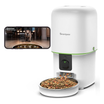


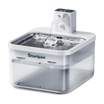








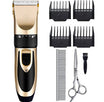
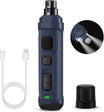





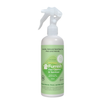












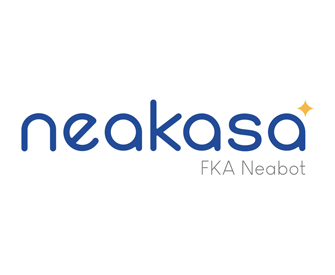

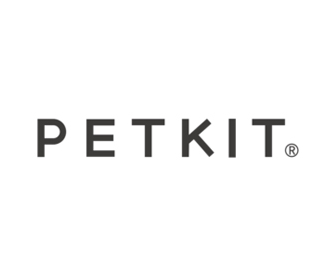




Leave a comment
All comments are moderated before being published.
This site is protected by hCaptcha and the hCaptcha Privacy Policy and Terms of Service apply.